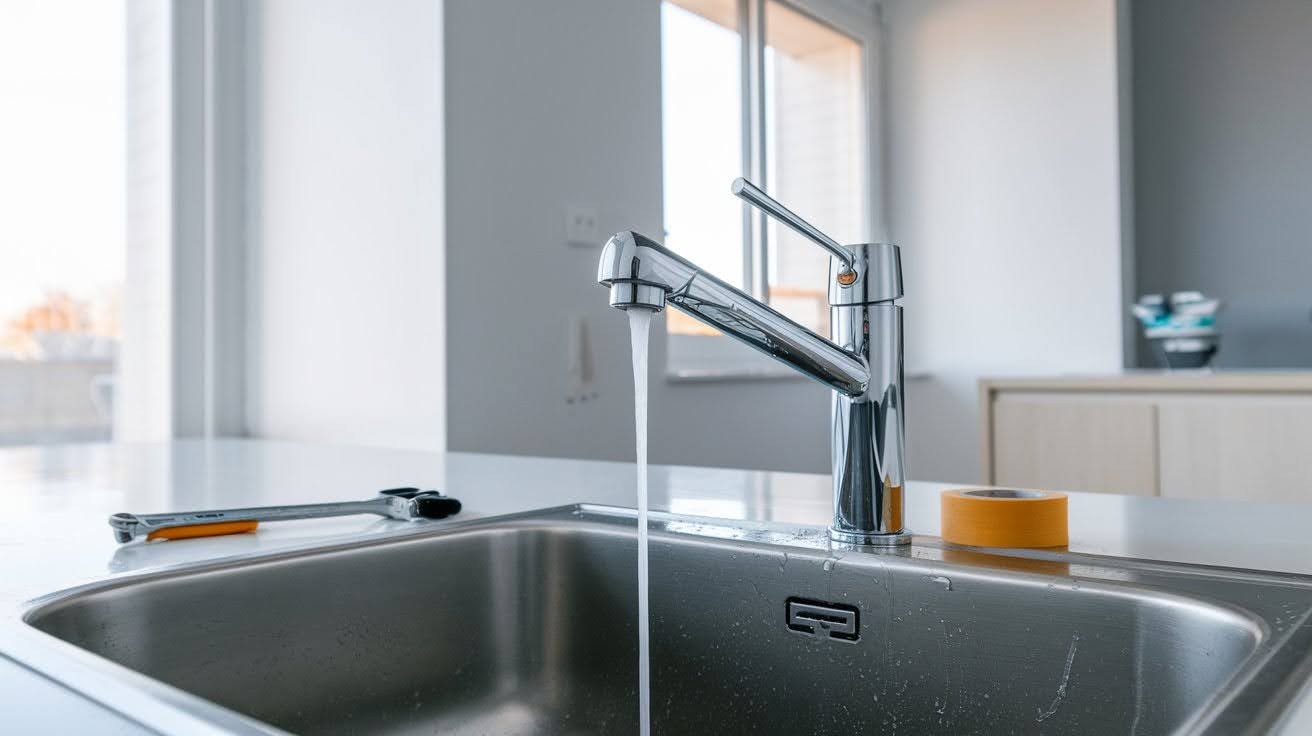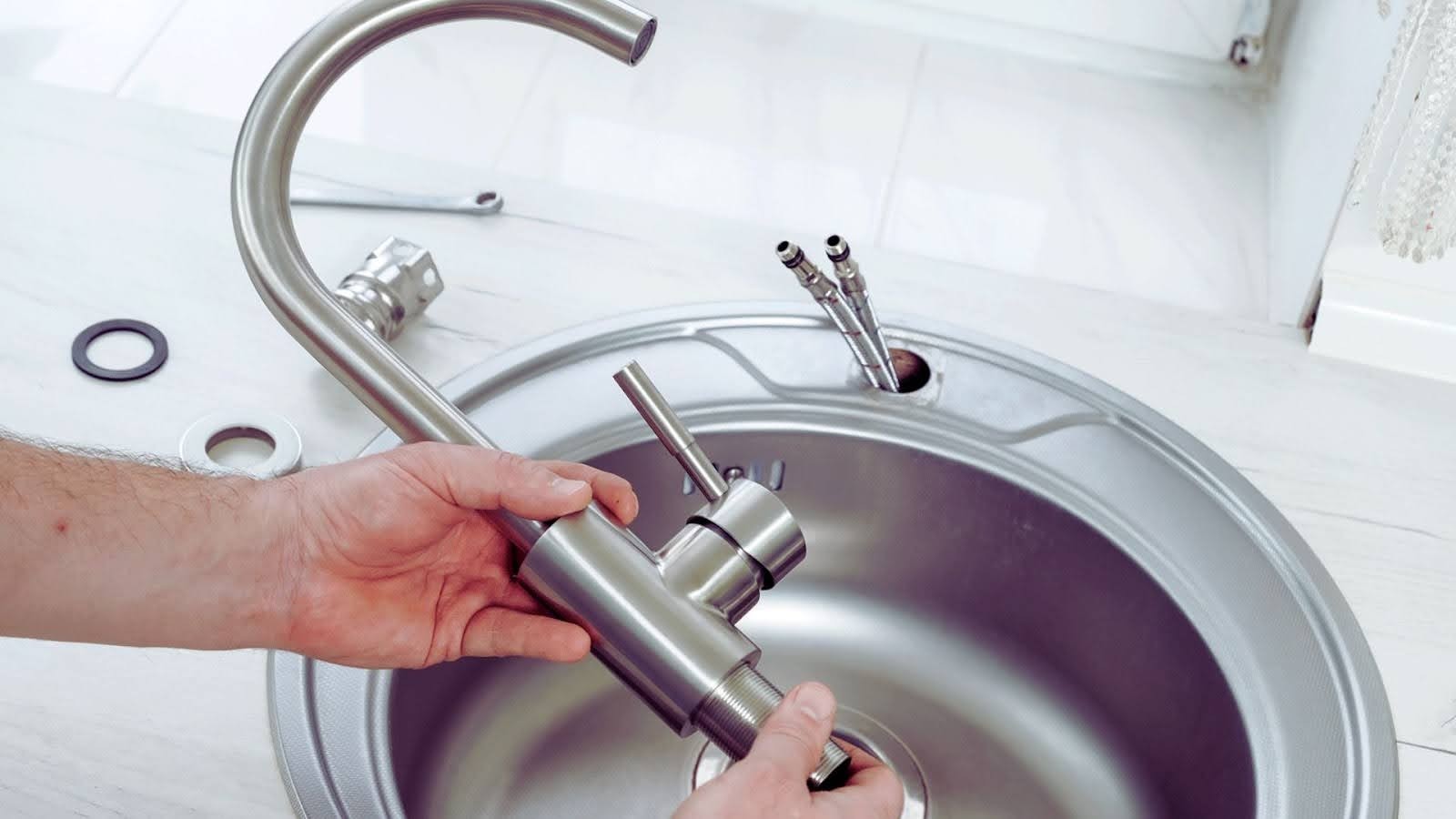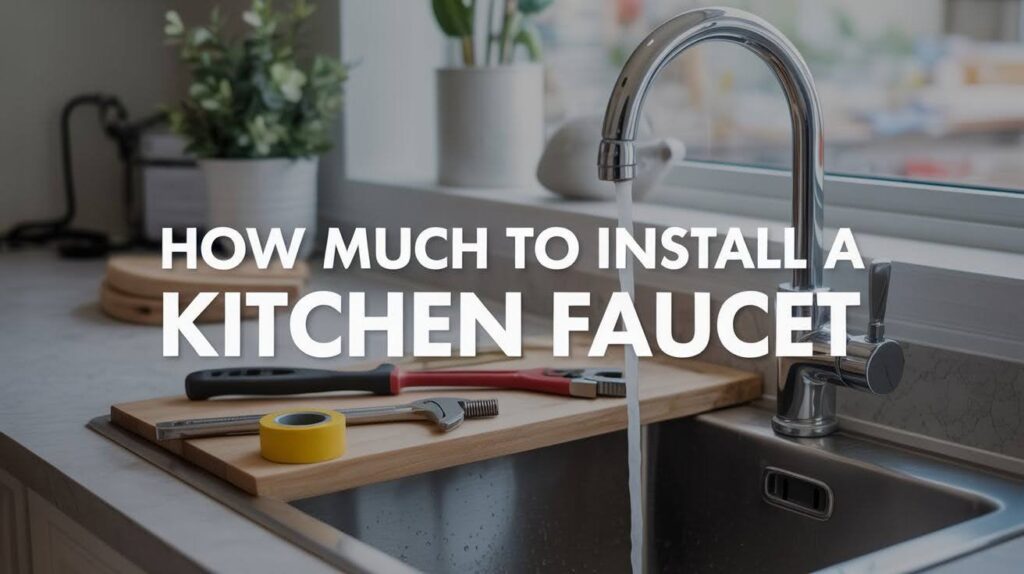Replacing a kitchen faucet seems like a relatively easy task until you get to the cost of the faucets most people want.
I’ve helped countless homeowners get a budget set. Numerous factors affect how high to install a kitchen faucet, though they may not be apparent.
That is truly why I’m covering all things from the faucet cost to labor cost. I’ll go through what factors into pricing.
I’ll also explain the when for DIY with cost avoidance. Shopping can start because you know the price you want and what you expect from kitchen faucets.
Average Cost of Installing a Kitchen Faucet

Basic installation through big-box stores like Home Depot or Lowe’s runs $92 to $119 for straightforward replacements.
Standard professional plumber installation typically costs $119 to $400 or more, depending on your location and the plumber’s rates.
Flat-rate plumbing projects often fall between $476 and $777, including labor and basic materials in one package.
Complexity plays a huge role in final pricing. Single-hole faucets install faster than widespread three-hole models. Location affects labor costs significantly, with urban areas charging more than rural regions.
Additional materials like supply lines or mounting hardware can add to your bill if they need replacing during installation.
Cost Breakdown

Understanding where your money goes helps you budget accurately and spot potential savings.
Cost of the Faucet
Basic faucets start around $40 to $100. These handle everyday tasks without fancy features.
Mid-range options with pull-down sprayers or dual handles run $100 to $500. A feature-rich model like the Moen Adler costs about $155.
High-end faucets with touchless sensors, copper finishes, or designer brands can reach $500 to $2,000 or more. These offer premium looks and advanced technology.
Professional Installation Costs
Hiring a plumber costs more than a handyman but ensures proper work. Plumbers have licensing and insurance that protects you.
Additional charges can add up quickly. Trip fees cover the service call, overtime rates apply for evening or weekend work, and special tools for unique installations increase costs.
Complex sink types take longer to work on. Difficult plumbing access under cramped cabinets slows the job down and raises labor charges.
Extra Costs to Consider
Permits may be required for major plumbing modifications in some areas. Check local codes before starting work.
Unexpected plumbing issues pop up during installation. Rusted shutoff valves, frozen pipes, or broken supply lines all need fixing before the new faucet goes in.
Replacement parts like supply tubes or mounting hardware aren’t always included. Budget an extra $20 to $50 for these items just in case.
DIY Installation vs Professional Installation
Deciding who installs your faucet affects both cost and outcome in ways you should consider carefully.
|
Factor |
DIY Installation |
Professional Installation |
|
Cost |
Saves $100 to $400 in labor costs |
Costs $119 to $400+ for labor |
|
Time Required |
2 to 6 hours for beginners |
30 to 60 minutes for most jobs |
|
Skill Level Needed |
Basic plumbing knowledge and tools required |
No homeowner skills needed |
|
Risk Level |
Higher risk of leaks, damage, or improper installation |
Low risk with licensed, insured professionals |
|
Tools Required |
Must own or buy a basin wrench, an adjustable wrench, and putty |
The professional brings all necessary tools |
|
Warranty |
No warranty on your own work |
Service guarantees cover future issues |
|
Problem Solving |
Must troubleshoot issues yourself |
Plumber handles unexpected complications |
|
Best For |
Simple replacements, experienced DIYers, tight budgets |
Complex installations, first-time homeowners, peace of mind |
Tips to Reduce Installation Cost
- Choose simpler faucet designs that install quickly and require fewer parts
- Match your new faucet to existing mounting holes to avoid sink modifications
- Look for promotions or bundled deals where retailers include free installation with faucet purchase
- Inspect existing plumbing before buying to identify needed parts and avoid last-minute supply runs
Conclusion
Installing basic DIY kitchen faucets costs under $100, while professionals charge over $800 to install luxury faucets. Most homeowners pay from about $200 to about $500.
I’ve seen successful DIY efforts and failed ones. Be honest about your abilities. Paying someone to fix leaks costs less than a leak repair.
Try to seek quotes from two or three plumbers for comparison of the costs.
Leave a comment involving your biggest concern about faucet installation. I’ll help you work through it if you’re ready to tackle your project.
Frequently Asked Questions
How long does it take to install a kitchen faucet?
Professional plumbers finish in 30 to 60 minutes, while DIY installations take two to four hours, depending on experience.
Do I need a plumber to install a kitchen faucet?
Simple replacements work for DIY, but new installations or plumbing problems require professional help for the best results.
What tools do I need to install a kitchen faucet myself?
You’ll need adjustable basin wrenches, plumber’s putty, Teflon tape, a flashlight, and a bucket.
Can installation costs exceed the price of the faucet?
Yes, a $50 faucet might cost $200 to install if plumbing updates or difficult access is involved.
Should I replace supply lines when installing a new faucet?
Yes, new braided stainless steel lines cost $10 to $20 and prevent leaks from old, disturbed lines.

